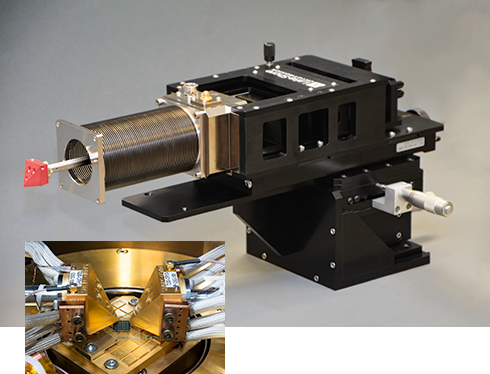This recent University of Virginia article spotlighting their “Top Innovators” gives a nice history of what led to the development of the unique GSG probe created by Dominion MicroProbes (DMPI), a key partner of ours in our terahertz frequency on-wafer cryogenic probe arm initiative.
The article highlights the work of UVA professors Arthur W. Lichtenberger, Robert M. Weikle II, and N. Scott Barker, explaining that the genesis for their THz wafer probe—and the launch of DMPI itself—was a request for them to find a way to more effectively measure the performance of THz-speed devices, including transistors. What resulted was the creation of the low-loss probe that eliminated “much of the cost and error associated with traditional methods of THz measurement and allows users to measure higher frequencies.” What’s more, it could be used to measure a multitude of devices.
Probing at millimeter wave up to THz frequencies (75 GHz and up) is an interest of Lake Shore and our probe station customers. For this reason, DMPI became a collaborator of ours when we were looking for a way to extend these measurements to the cryogenic environment. DMPI engineered a robust, cryogenically qualified version of the T-Wave™ probe specifically for this purpose, and with extensive help from SWISSto12, Virginia Diodes (VDI), and Cascade Microtech, we were able to assemble a prototype of the industry’s first THz-frequency on-wafer cryogenic probe arm. All parties worked closely together to model and validate the arm’s measurement capability, and much of the prototype arm testing was done on a Lake Shore cryogenic probe station at UVA. (Since then, further validation and sample S-parameter measurements have been performed using analyzers from Keysight Technologies.)
Stay tuned in the coming months for more news about this exclusive product from Lake Shore.

